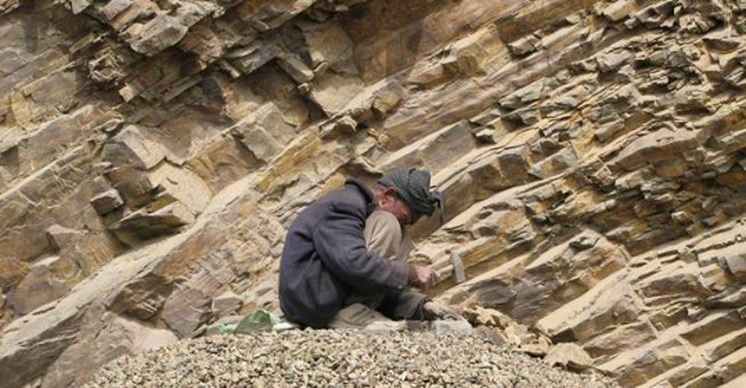Where does macadam come from? – Part Two

The Industrial Revolution
A significant turnover for building new roads came with the period of the so called “industrial revolution”. At that time a steam machine was invented which were introduced as a main drive unit in factories. In no time it was fast improved and then it was used in the first steam locomotive. Old roads became obsolete and did not meet high quality standards of increasing traffic for dynamic new industries. New large and heavy wagons and carts appeared on the roads. Traffic increase created new demands for logistics and transportation of raw materials and finished products.
New method of McAdam
Building a new road quickly and meet high quality standards with the least cost as possible was a tough nut to crack. At the appropriate moment of history John Laudon McAdam (1756-1836), Scottish engineer and entrepreneur appeared.

Even an average student of English can feel where the name for this type of stone aggregate comes from. (When pronouncing “Mc” as [mek] it is very close to the Czech name “makadam”). McAdam noticed that stone aggregates of a particular size have so called “self tightening properties” it means that when a stone aggregate is rammed down well, individual stones wedge among each other.
He came with his invention in the right moment, for ramming process to be done correctly is not a simple thing. At that time, it was no problem at all. Steam machine already existed and furthermore it was attached to a sturdy roller.
His findings were used successfully in 1810 when building a road in Bristol. Later on he improved his method by final cover with fine crushed stone on the surface of a “roadway”. For finer surface of a roadway he later added next improvement i.e. pouring liquid tar through surface already rammed down with stone aggregate.
This building method spread all over Europe and in 1830 it was used the then USA on a regular basis.


Nothing could stop a full potential and development of modern civilization. As a reward for his invention he was honoured to be portrayed on a British postage stamp.
A Story
A funny story is told bout him. Once his suppliers of gravel asked what size the crushed stone aggregate should be for his new invention. This is what he replied: “it should be about the size of stone you can put into your mouth”. Only one of them has made stone aggregates a bit larger than the others. In the end it emerged that he was toothless.

It would be a mistake to think that manual production of stone aggregates has disappeared today. There are still places in the world where this craft is still running.

Source: www.lomyatezba.cz
